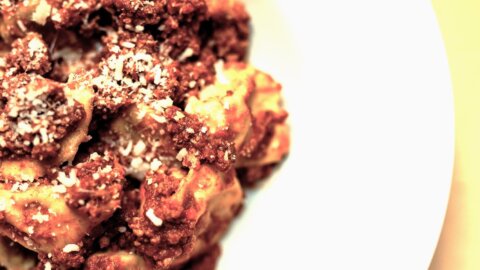Antò, it's hot. So she recited an unforgettable commercial from a few years ago, which sponsored a product to cool off during the summer. In the meantime, however, due to climate change, Italian summers (and around the world) have become increasingly hot, changing not only our habits (today iced tea is no longer enough, you need air conditioning on the worst days... ) but also the very characteristics of our territory and our crops. This was noted by Coldiretti itself, which on the occasion of the recent event of the peasant village in Milan launched the first "Expo of Italian exotic fruits", during which it presented data onunprecedented made in Italy production of tropical fruits of wide consumption such as mango and bananas, but also of others much less known, such as black zapote or sapodilla.
“That of tropical fruit made in Italy – underlines Coldiretti – is a phenomenon exploded due to the effects of overheating, determined by climate change and destined to profoundly change consumer behavior in the coming years, but also the production choices of the farms themselves. This is demonstrated by the fact that we have gone from a few hectares planted with tropical fruits to over 500 hectares with a 60-fold increase in just five years". Sicily takes the lion's share of this new phenomenon, with avocado and mango crops of different varieties in the countryside between Messina, Etna and Acireale, but also passion fruit, black zapote (similar to persimmon, of Mexican), sapodilla (from which latex is also obtained), lychee, the small Chinese fruit that resembles Muscat grapes.
“All thanks to the commitment of young farmers who have chosen this type of cultivation, often reclaiming and revitalizing vacant land precisely because of climate change, previously destined for the production of oranges and lemons”. Boom of Italian tropical fruits also in Calabria, where mango, avocado and passion fruit crops are joined by thay aubergine (Thai variant of our aubergine), macadamia (dried fruit halfway between almond and hazelnut) and even sugar cane, while the annona, another fruit typical of the countries of South America, is now widespread along the coasts to the extent that it is also used to produce jam.
The trend is rapidly becoming an increasingly interesting market segment, considering that over six out of 10 Italians (61%) they would buy Italian bananas, mangoes, avocados if they had them available instead of foreign ones, according to a Coldiretti-Ix survey, it was released for the occasion. Furthermore, 71% of citizens would be willing to pay more to have the guarantee of the national origin of tropical plants. A choice motivated by the higher degree of freshness but also by the fact that Italy - specifies Coldiretti - is at the top of world food safety with the lowest number of agri-food products with irregular chemical residues (0,8%), a share lower than 1,6, 1,3 times the average of the European Union (7%) and 5,5 times that of non-EU countries (XNUMX%).
The novelty is not only Italian and is also affecting other European countries, such as Spain. In the Iberian country we will soon switch from oranges to papaya: the countryside is undergoing a cultural revolution due to the warmer temperatures, so if almond production doubles in the last three years in Castile, the medlar groves in the Alicante area are transformed and become subtropical crops such as mango and papaya. Other examples: the climate of the Cuenca mountain range, with cold winters and minimal rainfall, has become very good for wild truffles, while in the Toledo region many pistachio, almond or olive plantations are springing up, which have replaced the traditional cereals.
THE EXOTICS GROWN IN ITALY
| Fruit | Typology | Areas of origin | Where it is grown in Italy |
| Avocado | Similar to a pear, it is considered a "fat" fruit | Mexico – Central America | Sicily, Calabria |
| Mango | Of Maya and Nam doc mai varieties, sweet and juicy, reminiscent of peaches | South Asia, Australia | Sicily, Calabria |
| Banana | It is the best known exotic fruit | South Asia, South America, Africa | Sicilia |
| Papaya | Juicy and refreshing, halfway between apricot and melon | South America, Central America, Asia | Sicilia |
| Passion fruit | Intense aroma and sweet sour taste | South America, Asia | Sicily, Calabria |
| Black Zapote | Reminiscent of persimmon in shape and chocolate in flavour | Central America, Asia | Sicilia |
| sapodilla | In taste it is similar to pear, latex is also obtained from it | Central America, South America | Sicilia |
| Thay eggplant | Asian variant of our aubergine | Asia | Calabria |
| Macadamia | Type of dried fruit halfway between almond and hazelnut | South Africa, South and North America | Calabria |
| Annona | Rich in sugars, with a sour-sweet taste | Central America, South America | Calabria |
| Litchi | Small fruit of Chinese origin, reminiscent of Muscat grapes | Asia | Sicilia |
| Sugar cane | Plant from which cane sugar is obtained | Asia, South America | Calabria |




